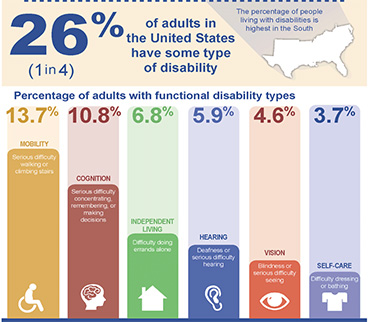What is WebAIM?
WebAIM, short for Web Accessibility in mind, is a non-profit organization founded in 1999 and is based in Utah State University, in Logan, Utah. Their mission is to expand "the potential of the web for people with disabilities by empowering individuals and organizations to create accessible content" by providing the knowledge, technical skills, tools, organizational leadership strategies, and vision to empower organizations in making their content accessible to people with disabilities.
According to the Center for Disease Control and Prevention, one in four adults in the United States has a disability, which is almost 83 million people. Although not all disabilities impact internet use, it is imperative to design with all individuals in mind. For institutions of higher education and government agencies, failure to make online resources accessible may result in discrimination and eventual lawsuits.
The internet offers independence and freedom that is unavailable through any other medium. If businesses, organizations (private and public), federal agencies, institutions of higher education, K-12 institutions, and others ignore accessibility intentionally or unintentionally, they exclude a segment of the population that stands to gain the most from the internet and the web. Web accessibility ensures that the web, your website and your business are accessible to and can be used by a broader population.















